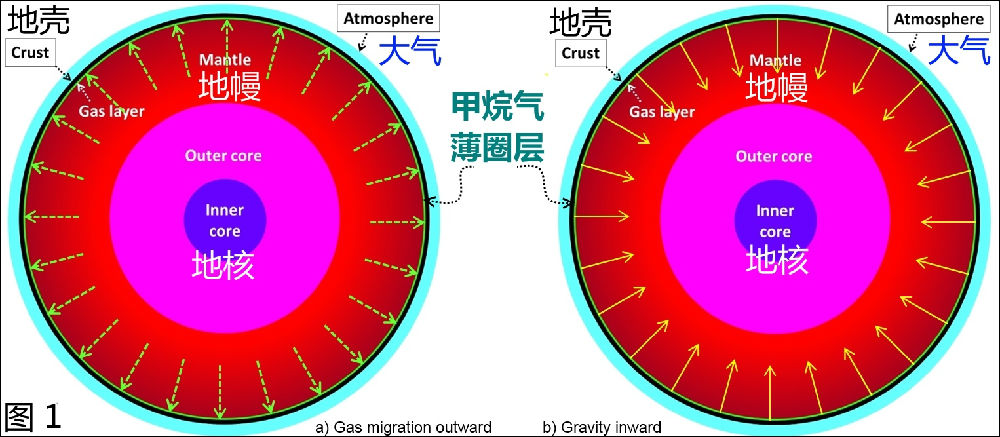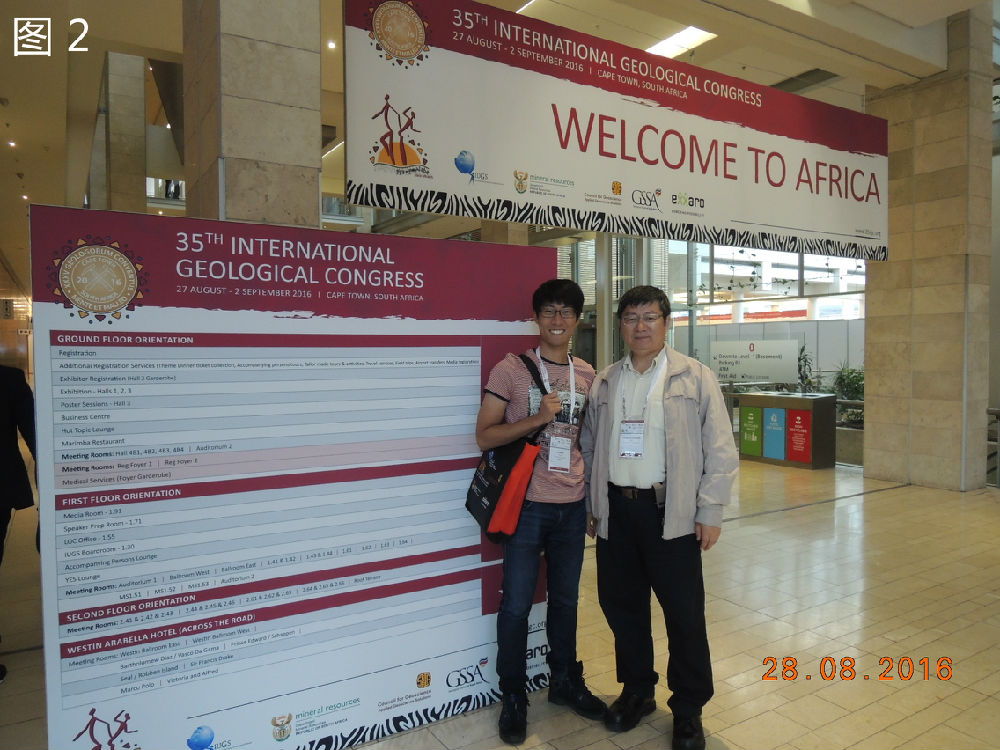博文
科研的原则与地球的理论
|
科研的原则与地球的理论
岳中琦
昨天,港大机械系一位教授在《港大教员微信群》转贴了,爱因斯坦于1918年4月在柏林物理学会举办的麦克斯·普朗克六十岁生日庆祝会上的讲话。英文题目为“Principles of Research”。对应的中文题目应该为《科研的原则》。爱因斯坦写了以下的科研原则:Man tries to make for himself in the fashion that suits him best a simplified and intelligible picture of the world; he then tries to some extent to substitute this cosmos of his for the world of experience, and thus to overcome it。这个原则或许有以下中文翻译:人试图,以最适合自己的式样,为自己勾画出,实在世界的一幅简化的与明白易懂的图像;然后,他试图,在某种程度上,用自己勾画的和谐宇宙体系来代替体验过的实在世界,再超脱这个实在世界。
自2008年发现了地下深部极高压甲烷天然气造成汶川地震以来,我一直在研究,以最适合于自己的式样,为自己勾画出,实在地球的一幅简化的与明白易懂的图像;然后,我试图,在某种程度上,用自己勾画的和谐地球体系来代替体验过的实在地球,再超脱过去来认识、演绎和预测这个实在地球。这个和谐地球体系就是,在地壳与地幔之间存在一薄层极高压、高密度甲烷气体球圈层(图1)。

今年8月27日到9月2日,我参加了在南非开普敦举行的第35届国际地质大会(International Geological Congress,IGC)(图2)。

IGC是由各国地质机构和学术团体代表组成的、每隔4年定期召开的国际地质学术会议。国际地质大会是四年一次的国际地质学家的学术盛会。她于1876年创立。1878年第一届国际地质大会在法国巴黎召开。以后每4年召开一次,大会没有固定会址和永久性会员。每次参加大会,申请下下一届的举办城市。它被誉为地球科学的奥林匹克。
35届IGC主题有三个:一是地球科学为社会服务;二是基础地球科学研究;三是经济发展中的地球科学研究。会议主题下设科学议题,在各科学议题下再设专题研讨会。我应邀在主题二的A Dynamic Earth 议题下的Geo-hazards and Sustainable Development under Climate Change Scenario上作了口头报告。我的口头报告题目是Hypothesis of a Thin Methane Gas-sphere between Earth’s Crust and Mantle(地球的地壳与地幔之间存在一薄层甲烷气球圈层的假说)(图3)。它的摘要参见附件。

在报告中,我用这个假说来重新认识、解释和演绎地震、火山和油气田等地球物理、地球化学和地质学现象。
真是令人高兴啊!
居然无意中,运用了爱因斯坦倡导的科研原则来进行了地球科学的研究,自然而然地勾画了自己的一个和谐地球体系。它不仅能解释现有的地球现象,且可预测和演绎地球的过去和未来。
2016年9月30日23:00写成于香港大学黄克競楼办公室
附件:35th IGC收录的英文报告摘要
Yue ZQ. 2016. Hypothesis of a Thin Methane Gas-sphere between Earth’s Crust and Mantle, Paper Number 514. Abstract 35th International Geological Congress, 27 August - 2 September 2016, Cape Town,South Africa. http://www.americangeosciences.org/information/igc; and
http://www.americangeosciences.org/sites/default/files/igc/514.pdf
Hypothesisof a Thin Methane Gas-sphere between Earth’s Crust and Mantle
Yue, Z.Q..
Department of Civil Engineering, The University of Hong Kong,
Hong Kong, China, Email: yueqzq@hku.hk
Abstract
This paper presents the hypothesis that a thin methane gas-sphere exists between the solid crust rock and the mantle material of the Earth. This gas layer separates and protects the cold crust rocks from the hot mantle and core materials. The methane gas is produced by the mantle and core materials and is stored by the spherical trap of the compressive lower crust rock. The huge material mass of high temperature and high pressure forming the mantle and core of the Earth can have the ability to generate large amount of methane gas every day. The methane gas generated in the mantle and core has to migrate and flow upward and accumulate beneath andin the lower crust according to the second law of thermo-dynamics, where the lower crustal rock in high compression forms the primary spherical trap.
The spherical dense gas layer is an ideal foundation to flexibly support, uplift and float the spherical crustal rocks. So, the crustal rocks can be stable and integrity over vast areas, can form huge spherical plates and basins and can have relative hoop movement and drifts. It is also an ideal insulation layer to prevent the crust rock from melting by the hot mantle materials and also to prevent the heat of the mantle/cores from leaking into the crust rocks and the atmosphere. As a result, the mantle/cores can keep their hot temperatures and the crust can keep their solid rocks for millions to billions years. It is estimated that the thin gas layer can have the thickness variable from several hundred meters beneath oceanic crust to a few kilometers beneath mountainous plateau continental crust. Its density is from 500 kg/m3 to 1000 kg/m3. Accordingly, the dense methane gas mass forming the thin spherical layer can be 10 to 240 times of the air mass (5.148×10^18 kg) forming the atmosphere. Its leaking along deep faults or plate boundaries causes earthquakes and volcanoes and supplies to shallow gas and oil reservoirs beneath secondary traps in adjacent basins of the upper crustal rock mass.
References:
[1] Yue ZQ (2014) On cause hypotheses of earthquakes with external tectonic plate and/or internal dense gas loadings, Acta Mechnica 225:1447-1469.
[2] Yue ZQ (2013) Whyour Earth’s crust not quiet? Global View of Engineering Geology and the Environment, Taylor & Francis Group, London, ISBN 978-1-138-00078-0, 43-50
https://wap.sciencenet.cn/blog-240687-1006052.html
上一篇:贺殷建华教授60花甲生日
下一篇:今天港大主楼迎风飘扬的五星红旗